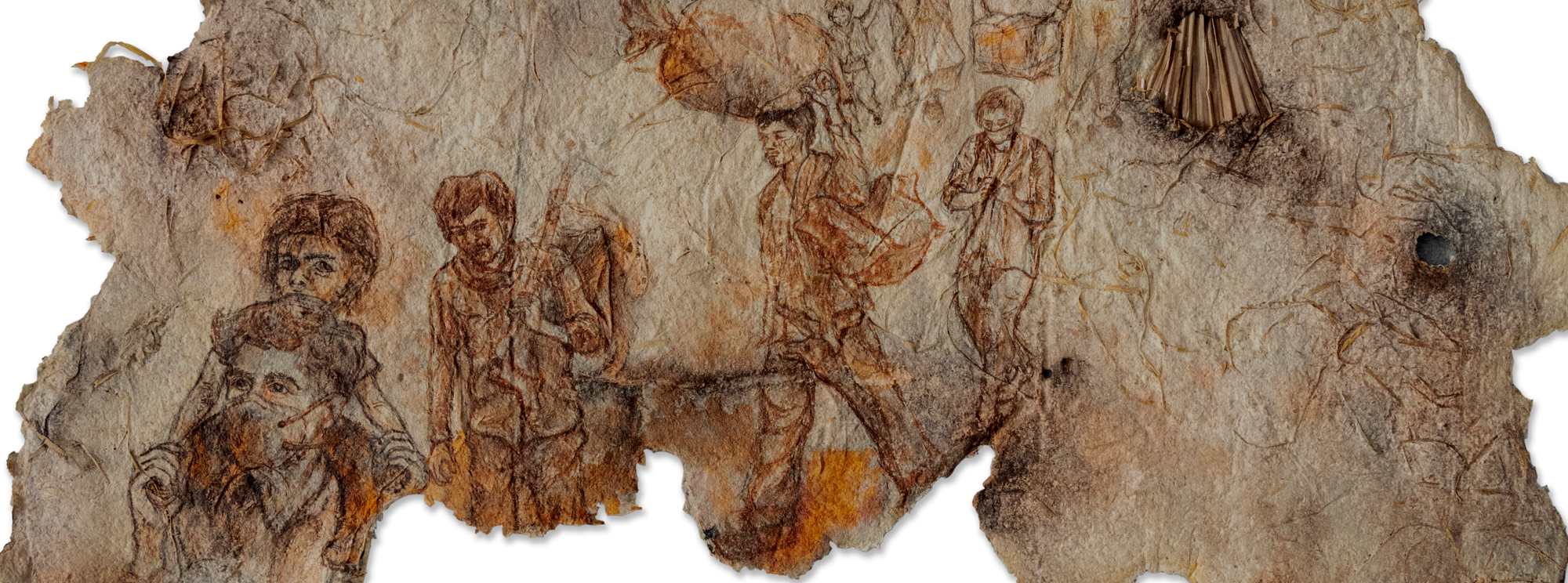#InConversation with Gopa Roy
By Sanjana Srinivasan | Nov 27 2023 · 5 mins
Gopa Roy is a collective-individual artist based in New Delhi. Her work mostly reflects the relationship between land, memory, labour, and materiality. Inspired by the farming culture, local life, and craft of her native village in Tripura, Roy's practice involves the use of mediums such as land arts, installations, drawings, paper making, photography, and video documentation. Here, Sanjana speaks to Gopa about her practice.
Sanjana - Hi Gopa. I was thinking we could use this as an opportunity to speak about your practice. Shall we begin with your journey as an artist and how your upbringing in Tripura has influenced your artistic expression?
Gopa - Born and raised in the enchanting landscapes of Tripura, my artistic journey finds its roots in the vibrant surroundings that kindled a passion for creativity from an early age. Observing my mother's adept hands mold clay into an array of objects, from toys to utensils fuelled my imagination and sparked a deep love for artistic expression. This fascination merged with the influence of my elder brother, a student of art, encouraging collaborative drawing sessions and craft experiments.
These formative experiences remain the heartbeat of my artistic identity, breathing life into each creation. They act as a nostalgic bridge connecting my present artistic endeavours with the clay-scented memories of my youth. From Tripura to my current space in Delhi, the journey is a testament to the enduring impact of those early encounters, shaping my art with rooted, and deeply personal essence.
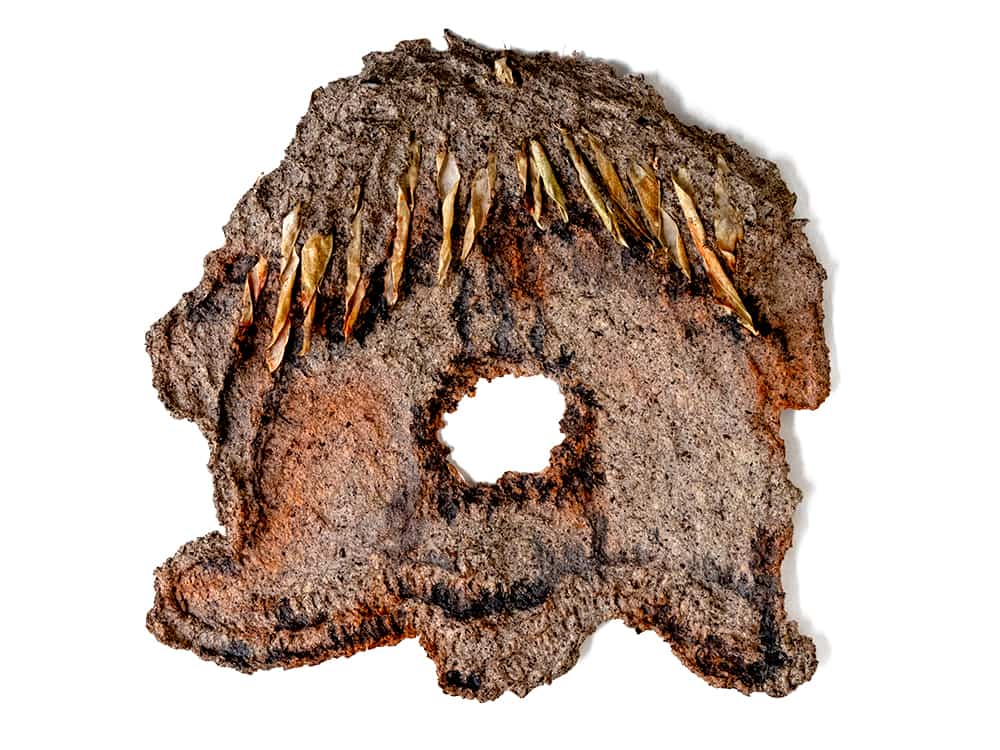

Journey of the passer-by - V, 2020
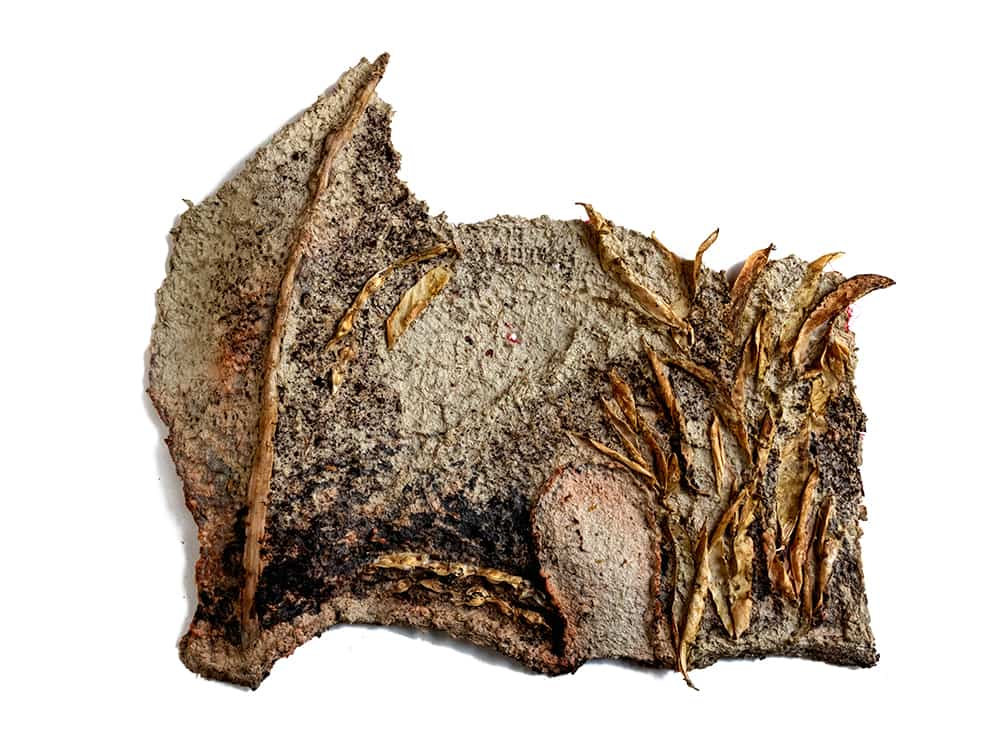

Journey of the passer-by - IV, 2020
Sanjana - Can you tell me more about how this aspect of being influenced by your hometown, Rangutia, Tripura is reflected in the materials and colours you use? And does that sort of apply to Delhi? Because I know that you are based in Delhi now.
Gopa - Nature, an ever-present muse, has been the guiding force in my artistic journey since my formative years. Hailing from the agrarian haven of Rangutia village, where the heartbeat of life is intertwined with agriculture, I find profound inspiration in the rhythms of rural existence. Through my art, I endeavour to weave a narrative that captures the essence of daily farmer life, celebrating the rituals, social dynamics, and cultural events that shape their world.
During my graduation in Tripura, I embarked on an experimental phase, sourcing materials directly from nature. Soil, dung, flowers, and leaves became my pigments, creating a palette that mirrored the organic vibrancy of my surroundings. Influenced by the art of Alpana, rice flour found its place as a unique medium in my work, adding layers of cultural significance.
Working with these organic elements isn't just a creative choice; it's a profound connection to the landscapes imprinted in my childhood memories. The satisfaction derived from the tactile engagement with natural materials is unparalleled, making it a vital aspect of my artistic process. Despite the stark contrast between Tripura and Delhi in terms of landscape, geography, and culture, I persist in utilising organic materials. The distance from my hometown becomes a poignant undercurrent, infusing my work with memories, and the choice of materials acts as a bridge, connecting me to the roots that continue to shape my artistic identity.
Sanjana - Speaking of material, I remember you telling me that you either get natural material transported from Tripura or make your own paper. Can you tell me more about this? What draws you to these materials?
Gopa - Indeed, my artistic process is deeply entwined with organic materials, and the art of paper-making holds a significant place in my creative journey. This method unfolded during my MFA studies at Santiniketan, where I explored diverse fibers such as bamboo leaves, sugarcane scraps, banana plants, and straw. Initially crafting handmade paper, I gradually transitioned to creating my own work surface using organic pulp extracted from conventional paper. This unique approach allows me to infuse my expressions and emotions into the very texture, lines, and colors of the medium.
While this process forms the backbone of my artistic practice, the challenge arises in acquiring these rural materials while residing in Delhi. To overcome this hurdle, I make a ritualistic journey back to my hometown. There, I meticulously process and collect the fibers that become the essence of my work, forming a tangible link between my rural roots and the urban canvas of Delhi.
In these fibers, I touch my village anew. The imagery of my village unfolds before my eyes, and the aroma of the soil permeates my senses. Each fiber carries not just physical attributes but a wealth of memories and emotions. These are the threads that weave into the narratives of my creations, telling stories that transcend the materiality and resonate with the soul of my origins.
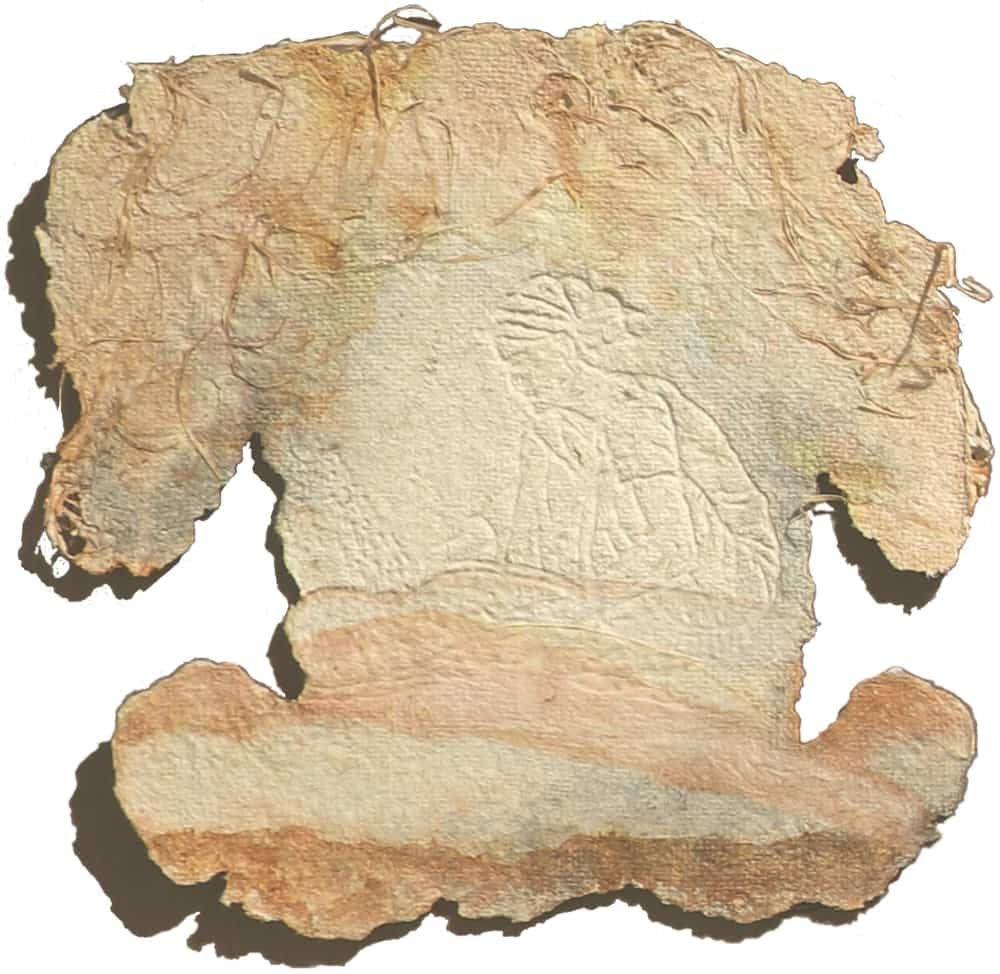

Journey of the passer-by - XIV, 2020
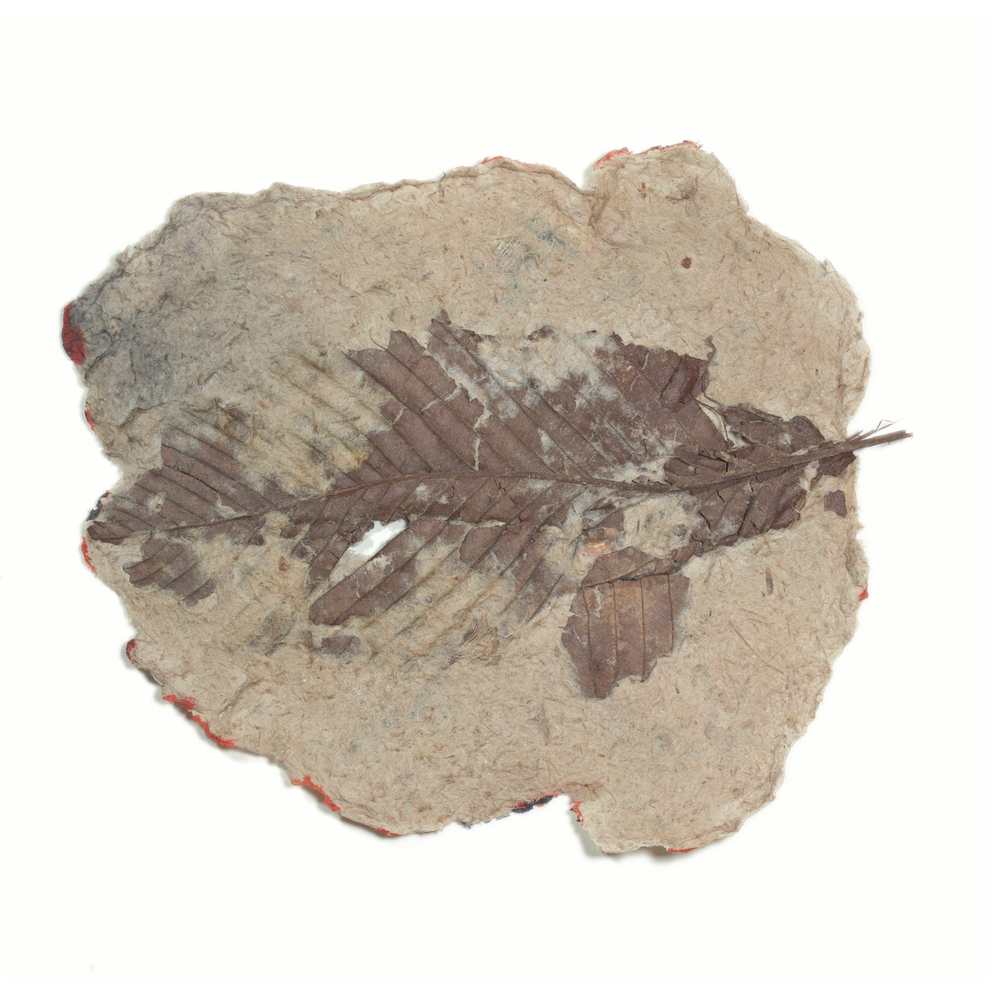

My Native Land - XXV, 2018-2019
Sanjana - One of the themes or stories that runs through your works is the impact of the COVID-19 pandemic on migrant labourers. What motivated you to create this series - "Journey of the Passer-by"?
Gopa - "Journey of the Passer-by" delves into the harrowing reality faced by migrant workers across different corners of India, particularly amidst the global upheaval caused by the COVID-19 pandemic. The widespread contagion accentuates the vulnerability of these individuals, becoming a focal point in my artistic exploration. The emphasis is on the multifaceted challenges experienced by migrants—from the loss of jobs and seeking asylum to the relentless struggle for livelihood.
In the pursuit of safety, these individuals traverse the streets, each step echoing the desire to return home. Yet, the poignant question emerges: do they still have a home to return to? The uncertainties unravel as the narrative unfolds, questioning the consequences awaiting them upon arrival and the potential for additional challenges in their journey.
Parallelly, a deeply personal layer intertwines with the series, as my father passed-away due to COVID-19 at home. Mirroring the migrants' yearning for home, I too grappled with the same desire amid the stringent transport restrictions. The series becomes an anchor for the myriad questions haunting my mind about the concept of home, further intertwining the collective struggles of migrants with my own experiences of helplessness and adversity. "Journey of the Passer-by" serves not just as an artistic exploration but as a profound reflection on shared human struggles and the universal quest for a sense of home amidst turbulent times.
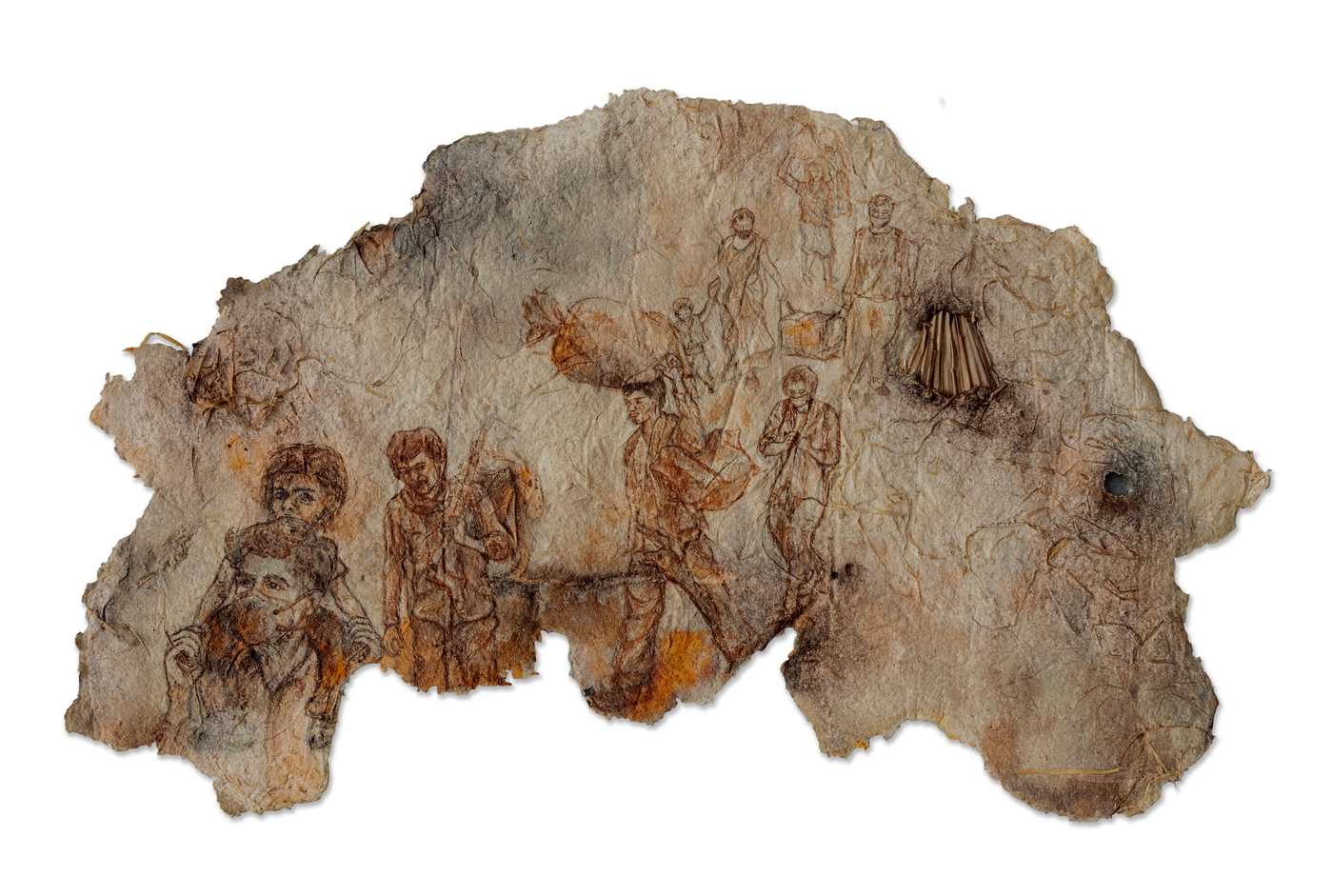

Journey of the passer-by - I, 2020
Sanjana - One thing that we haven't addressed in your OVR is your collective art practice. How do you see the role of art in raising awareness and advocating for social change, and how does your work contribute to this dialogue?
Gopa - Your question indeed touches on a crucial aspect of my artistic endeavours. The primary goal of my work is to resonate with the environments and communities I engage with. It is a means for people to embrace the work, interpret it through their perspectives, and cultivate meaningful connections. Societal responses hold profound significance in shaping the impact of my art.
A notable example is "SECURE (UN) SECURE," a land art project in my native village, designed to shed light on the diminishing agricultural lands. It addresses the encroachment of rubber plantations, posing environmental and health hazards, contributing to climate change. Beyond awareness, the project endeavours to foster connections among farmers and villagers, involving them in the cultivation of paddy, pulse, rubber, scrap, seed, bamboo, and straw.
Another collaborative endeavour, "Patched by either side," involved working with village women in Rangutia. This collective art, a hand-stitched quilt, aimed to revive the village's once-renowned hand-stitching tradition. It became a platform for women to stitch together childhood memories, unveiling untold stories of migration from Bangladesh during the 1971 riots.
Recently, a workshop organized by Artreach India at Loka School in Bihar exemplifies my commitment to community engagement. Conducting a 7-day workshop on handmade paper, the focus was not only on creating but also on fostering an ecological connection among village children. The aim was to instill awareness about crafting useful items without contributing to environmental pollution, utilizing materials readily available in their surroundings.
In essence, my artistic practice extends beyond individual expression to actively engaging communities, raising awareness, and building connections that transcend the boundaries of art and reach into the fabric of everyday life.
Sanjana - How do you balance the personal and political aspects of your art, especially when addressing broader political contexts that affect your community?
Gopa - Living in close proximity to the Bangladesh border has intricately woven the dynamics of the geopolitical landscape into my daily life and artistic narrative. The village, straddling the border, adds a layer of complexity, as our farmland exists in the liminal space known as "No Man's Land." This reality engenders a constant and delicate relationship with the border, shaping the routines of my family and fellow villagers. Every day, we navigate the intricacies of the fence, crossing it to tend to our farms.
While my artistic inclination leans away from explicitly delving into political issues, the unavoidable connection with the border inevitably seeps into my work. Despite my personal desire to keep politics at bay, the daily farming culture I depict becomes entwined with the political nuances of the border. It's an unintentional but inherent inclusion, as the everyday lives of my family and community intersect with the broader geopolitical context.
The border, once a physical demarcation, becomes a metaphorical borderland in my artistic expression. It encapsulates not just the geographical divide but also the resilience and adaptability of those who navigate its challenges daily. Thus, the political aspects, though unintentional, organically become a part of my artistic exploration, reflecting the intricate relation between the personal and the political in the tapestry of my work.
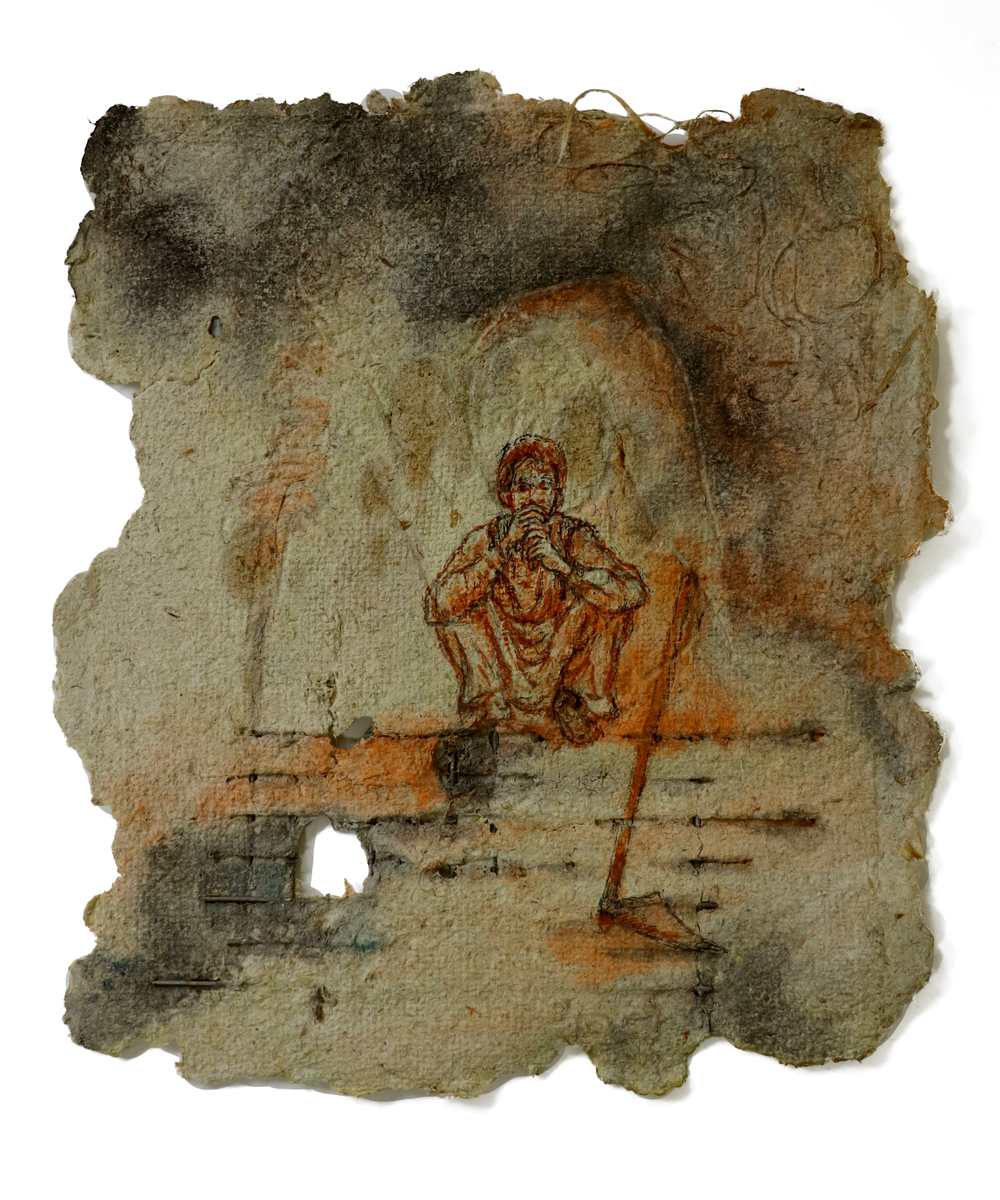

Journey of the passer-by - VI, 2020
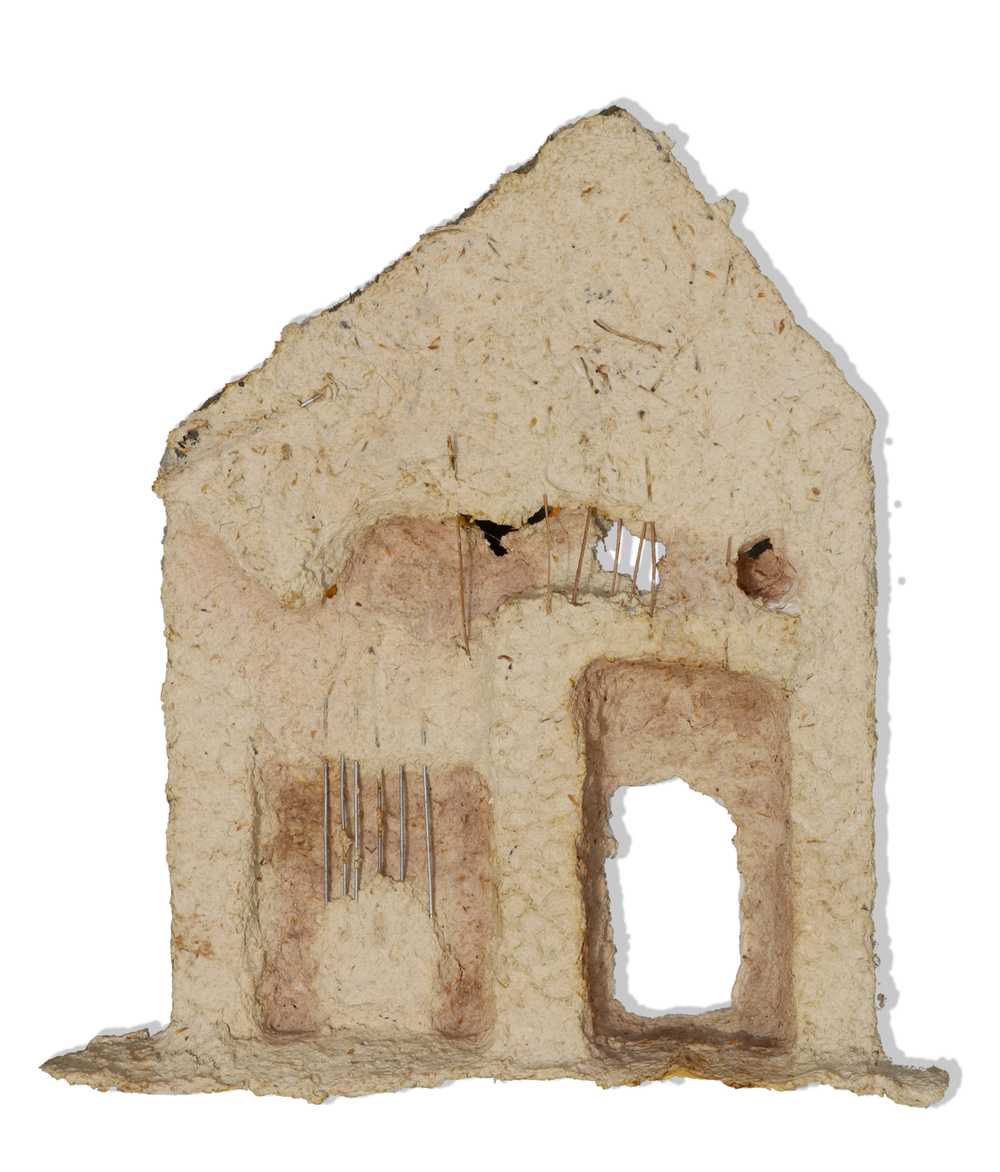

Journey of the passer-by - III, 2020
Sanjana - In that sense, are there specific artists or artistic movements that have inspired your work or played a significant role in shaping your artistic perspective?
Gopa - The society and culture that surround me serve as a profound wellspring of inspiration. The experiences and exposure to these elements become a sensitively woven tapestry that fuels not just my artistic endeavours but shapes me as a human being. This reciprocal relationship forms the core of my artistic practice, prompting a holistic design that seeks to encapsulate the essence of the human experience.
Sanjana - One last question Gopa. Can you share a glimpse into your future artistic projects or any themes you plan to explore in your upcoming work?
Gopa - I'm thrilled about my upcoming project—an intimate book series depicting the personal stories of farmers, focusing on their struggles with natural fibers. Crafted with care, the pages will showcase land textures, nature impressions, and human figures. Taking it a step further, I plan to transform these stories into a dynamic installation, featuring open books with video projections and lights. This immersive experience aims to redefine the relationships between land, lines, and boundaries around human beings, offering a unique exploration of life's complexities. Stay tuned as this narrative unfolds, blending stories, visuals, and experiences into an engaging dialogue.
Sanjana - That's lovely. Thank you so much Gopa!
Click here to view Gopa's OVR and learn more about her practice.

